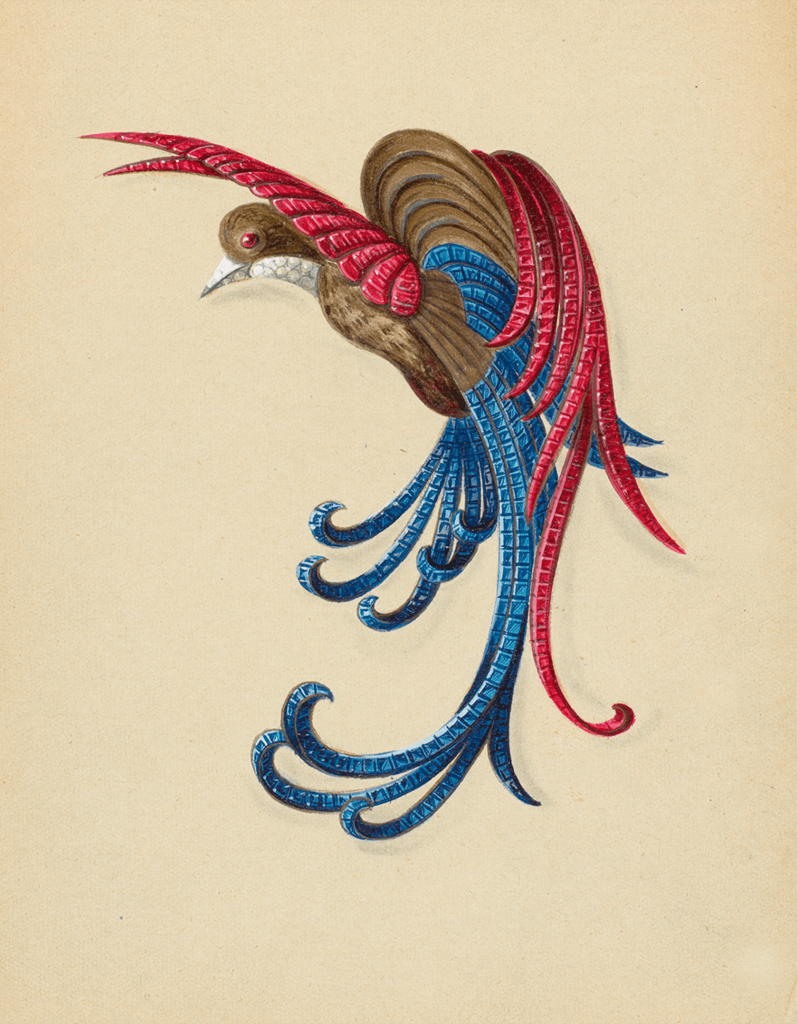
Bird clip
Creation details
- Creation year 1942
- Usage Clip
- Dimensions 75 × 112 mm
This clip testifies to the revival of flora and fauna as subjects in the jewelry arts in the 1940s, and more specifically illustrates the enthusiasm for birds, particularly exotic ones.
Its highly graphic design echoes the stylistic developments of the previous two decades. The majestic plumage of this bird of paradise is suggested by rows of calibrated sapphires and rubies that swirl and overlap, breathing gracefulness and elegance into this gorgeous piece. Its wings are made of gold and precious stones. On one of them, the feathers are depicted by rows of rubies with a scalloped outer edge, while the other, composed solely of polished gold, is given form through a play of inclined planes. The bird’s stylized silhouette is mitigated by the detailed engraving of the yellow gold feathers of its body and head. A ruby cabochon constitutes the creature’s eye, and its platinum beak and throat are pave-set with brilliant-cut diamonds.
The evolution of an iconography
A brooch with the same motif, dating from 1927, enables us to see the extent to which the treatment of this iconographic theme evolved during the first half of the twentieth century. Although the 1927 brooch was created at the height of the Art Deco period, it borrows extensively from the arts of the nineteenth century. This remarkable piece of jewelry mounted on platinum suggests the bird’s anatomy by the diffraction of the flat, openwork surfaces entirely filled with diamonds.
The 1942 clip suggests a stylistic renewal
The 1942 clip has a greater sense of volume and dynamism that gives a better idea of flight. The spiraling forms, derived from architectural vocabulary and integrated into that of the jewelry arts in the 1930s under the impetus of Modernism, are turned into an organic movement here. The caliber set enables the tail feathers to form fluid arabesques, enhancing the three-dimensional effect. The stylistic revival of the bird theme, which involved all Parisian jewelers, was to contribute to the success of this motif over the next three decades.

To go deeper





